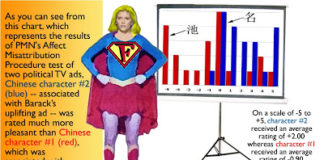In July 2011, the FDA proposed regulating mobile medical apps as medical devices (see “FDA Issues Long-Awaited Guidance – for Mobile Medical Apps“).
FDA has reserved the term “Mobile Medical App” (MMA) to mean a medical app that meets its medical “device” definition. Which mobile health apps will qualify as true MMAs requiring FDA approval?
That is a question left open by the FDA’s draft guidance. At least that’s the view of most of the experts who testified yesterday before the House Energy and Commerce Subcommittee on Communications and Technology. The session was titled “Health Information Technologies: Harnessing Wireless Innovation” and was chaired by Rep. Greg Walden (R-OR).
Bradley Merrill Thompson, General Counsel for the mHealth Regulatory Coalition, spoke about the need for FDA regulations of mobile health apps that obviously should be classified as medical devices. As an example, he cited an “innovative app” that allows you to do urinalysis with your iPhone.
To use the app, you do NOT pee on your iPhone! “You do the test mostly the old-fashioned way of collecting urine in a cup and then inserting a test strip,” said Thompson. “All the app does is objectively read the results using the camera on the phone.”
“The company website presents the app as able to help patients understand and manage diseases like diabetes, urinary tract infections and pre-eclampsia, a high blood pressure pregnancy complication,” said Thompson.
“But here is the problem,” said Thompson, “this app falls within longstanding FDA regulation for urinalysis. It seems to me that the company must be aware of the potential for FDA regulation, because on its home page, at the very bottom, after extolling the clinical uses of its product to monitor disease, the company tries to simply disclaim FDA medical device status.”
That was an interesting point that confirms what I have been saying about certain pharma-sponsored health apps that also try to disclaim FDA medical device status (see “Checking Under the Hood of Pharma Mobile Apps“).
However, what I found most interesting about Mr. Thompson’s testimony was his idea for how FDA can get off its ass and develop and publish its final guidance on mobile medical apps. It is exactly the same idea I had for how the FDA should develop guidance for regulating pharma advertising via social media. Listen to this segment of Mr. Thompson’s testimony:
(function() { var po = document.createElement(“script”); po.type = “text/javascript”; po.async = true; po.src = “http://d15mj6e6qmt1na.cloudfront.net/assets/embed.js”; var s = document.getElementsByTagName(“script”)[0]; s.parentNode.insertBefore(po, s); })();
As I said in my post FDA Social Media Guidelines Best Done in Baby Steps, “If FDA decides to bite off more than it can chew, it will take a long time to issue any guidance and whatever it comes up with will be out of date as soon as it is published.”









![6 Digital Tools at the Center of Healthcare Digitalization [INFOGRAPHIC]](http://ec2-54-175-84-28.compute-1.amazonaws.com/pharma-mkting.com/wp-content/uploads/2021/04/6DigitalTools_600px-100x70.jpg)




